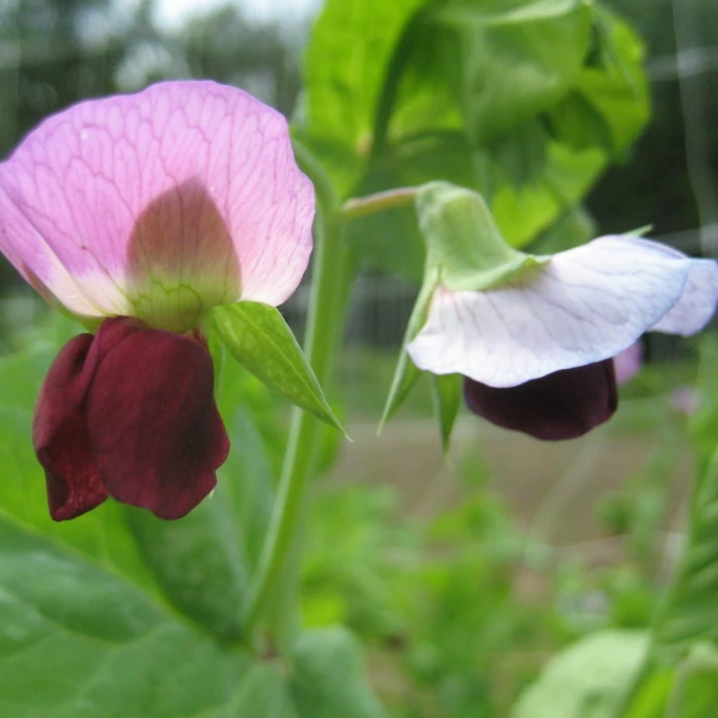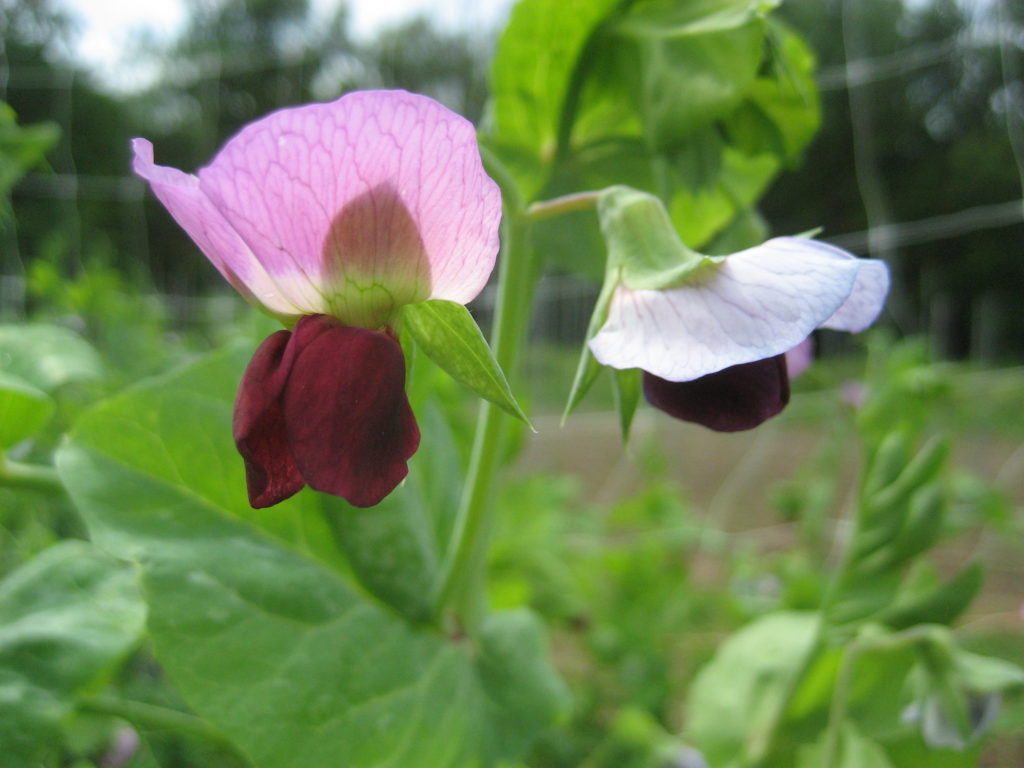
Grow-How: Your Guide To A Trellising Triumph
 Vines are some of the most spectacular plants to watch grow: the clear evidence of growth, the unlikely strength of their tendrils, the web of fresh green life that transforms the space where they grow. But climbing plants, while satisfying when properly trained, can quickly become a nuisance if neglected. Chances are your first succession of vines are already springing skywards, maybe in need of some support, and maybe you’re already planning your next succession of beans or cukes. No matter your perpendicular picture, these trellising tips can help keep your garden tall and proud.
Vines are some of the most spectacular plants to watch grow: the clear evidence of growth, the unlikely strength of their tendrils, the web of fresh green life that transforms the space where they grow. But climbing plants, while satisfying when properly trained, can quickly become a nuisance if neglected. Chances are your first succession of vines are already springing skywards, maybe in need of some support, and maybe you’re already planning your next succession of beans or cukes. No matter your perpendicular picture, these trellising tips can help keep your garden tall and proud.
Why trellis, you may ask? Not only does it save space and add to ease of harvest, but it can also reduce the chance of disease by getting plants off the dirt and giving them better air circulation. It also keeps them out of the reach of pests, gives easy access to roots for watering, and produces straighter, more perfect-looking fruit.
When gardening vertically, it's equally important to consider how much horizontal space the plants need. Consult the spacing requirements on your seed packs and add some good nutrients to your soil. That way your plants will have the resources they need to keep reaching skyward. What you actually use to trellis with varies depending on the weight and height of the plant in question. A rope or string might be perfect for one variety, but heavily fruiting crops will need more support. Here’s a primer for some common vertical plants and their preferences.
 Peas: These sweet and satisfying snacks need a trellis with a tighter mesh structure such as chicken wire or netting. Just like tomatoes, there are determinate peas (those that grow to a certain height and then produce pods) and indeterminate peas (those that grow and produce pods for the full life of the plant). Indeterminate peas need about an eight foot structure of netting, mesh, or chicken wire, which can be held up with metal or wood posts and attached with zip ties or twine. Some of our indeterminate varieties include Sugar Snap Pea, Swiss Giant Snow Pea and the Tall Telephone Shelling Pea. Determinate varieties, like Tom Thumb Pea, Sugar Daddy Snap Pea, and Green Arrow Shell Pea only get to be 2 or 3 feet high, and thus require only the smallest amount of trellising--an A-frame or cone-shaped support of wire or wood poles--or even, in the case of Tom Thumb, none at all.
Peas: These sweet and satisfying snacks need a trellis with a tighter mesh structure such as chicken wire or netting. Just like tomatoes, there are determinate peas (those that grow to a certain height and then produce pods) and indeterminate peas (those that grow and produce pods for the full life of the plant). Indeterminate peas need about an eight foot structure of netting, mesh, or chicken wire, which can be held up with metal or wood posts and attached with zip ties or twine. Some of our indeterminate varieties include Sugar Snap Pea, Swiss Giant Snow Pea and the Tall Telephone Shelling Pea. Determinate varieties, like Tom Thumb Pea, Sugar Daddy Snap Pea, and Green Arrow Shell Pea only get to be 2 or 3 feet high, and thus require only the smallest amount of trellising--an A-frame or cone-shaped support of wire or wood poles--or even, in the case of Tom Thumb, none at all.
 Beans: Bush beans, while convenient in that they don’t require trellising, don’t have the full-season harvest advantage of pole beans, which produce more beans as they grow. Unlike peas, which send out tendrils to guide them up their trellis, beans wrap the whole stem of the plant around their support. All a pole bean needs to stay vertical is a wooden stake or a string hanging down the wall of a house or shed.
Beans: Bush beans, while convenient in that they don’t require trellising, don’t have the full-season harvest advantage of pole beans, which produce more beans as they grow. Unlike peas, which send out tendrils to guide them up their trellis, beans wrap the whole stem of the plant around their support. All a pole bean needs to stay vertical is a wooden stake or a string hanging down the wall of a house or shed.
Cucumbers : Cukes can be grown on the ground, but if you’re looking for cleaner, straighter fruit, then consider using a trellis. You may also avoid some hungry pests and will certainly make harvesting less back-breaking. Choose a sturdy trellis, 4-6 feet tall, with a wire or mesh support that can bear the weight of the vines and fruit. Chicken wire is a great option here. Since the plants are bulky, they'll need to be trained up the trellis using ties or clips so their tendrils get the memo about the change in direction.
: Cukes can be grown on the ground, but if you’re looking for cleaner, straighter fruit, then consider using a trellis. You may also avoid some hungry pests and will certainly make harvesting less back-breaking. Choose a sturdy trellis, 4-6 feet tall, with a wire or mesh support that can bear the weight of the vines and fruit. Chicken wire is a great option here. Since the plants are bulky, they'll need to be trained up the trellis using ties or clips so their tendrils get the memo about the change in direction.
Flowers : Not only are viny flowers like Morning Glories, Sweet Peas, Balloon Vine and Moon Flower fantastic pollinators and beautiful to look at, they also add privacy to yards and fences. Their tendrils will take advantage of just about anything: string or twine on the side of your house, a fence, or sturdy wooden stakes. You can even let them climb up your porch, or add some romance with latticework or an arch.
: Not only are viny flowers like Morning Glories, Sweet Peas, Balloon Vine and Moon Flower fantastic pollinators and beautiful to look at, they also add privacy to yards and fences. Their tendrils will take advantage of just about anything: string or twine on the side of your house, a fence, or sturdy wooden stakes. You can even let them climb up your porch, or add some romance with latticework or an arch.
Tomatoes: There’s a definite art to trellising tomato plants. While tomatoes aren’t natural climbers, most indeterminate varieties (which the majority of our tomatoes are) require support. Growing tomatoes vertically will also keep fruit from spoiling on the ground and out of reach of critters.

You can either use a classic tomato cage (best for determinate varieties), or continuously attach their main stems to stakes, wire, or twine as they grow. Specific clips exist for this purpose, but you can also use bits of twine to twist the support string around the stem and keep it in place--just be careful the brittle branches don’t snap! The "Florida weave" is a popular method used by growers which you can learn more about here. With tomatoes, it’s important to use new supplies or sterilize old ones to keep diseases at bay. And don’t forget to prune your plants to keep them manageable and productive.
While the upfront labor of vertical gardening might be a turnoff for some, the reward of healthy plants, a bountiful harvest, and jungle-like yards are too good to pass up. Keep an eye on your vines to keep them trained, and challenge your plants to a race to the sky!






